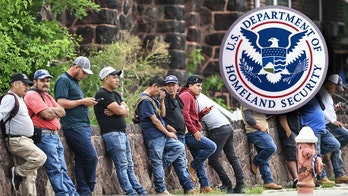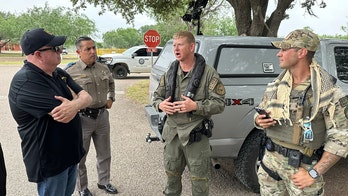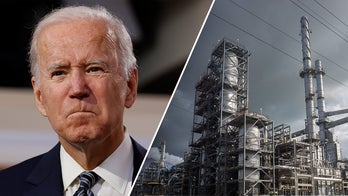
President Barack Obama speaks in the Diplomatic Reception Room of the White House in Washington, Friday, Oct. 30, 2009, before signing the Ryan White HIV/AIDS Treatment Extension Act of 2009. (AP Photo/Gerald Herbert)
President Obama grappled Friday with the costs and consequences of a long-term commitment to Afghanistan, but reached no decisions about troop levels, a top aide said, as military advisers briefed the president on an armed services already taxed by challenges around the globe.
The president reviewed his options with the Joint Chiefs of Staff and made clear he wants at least one more meeting with them and with his broader national security team before deciding on a revamped war strategy for the Afghanistan-Pakistan region, said a senior administration official.
The Washington Post reported two officials as saying late Friday Obama asked the Pentagon's top generals to provide him with more options for troop levels.
He reportedly is expected to receive several options from them next week.
U.S. officials have previously told the Associated Press Obama is considering sending a large number of additional U.S. forces to Afghanistan next year but fewer than Gen. Stanley McChrystal prefers. The president appears willing to send at least 10,000 to 15,000 troops of the 40,000 forces requested by McChrystal.
The Post reported Obama is seeking a strategy that would satisfy both his military and civilian advisers.
Obama's much anticipated review of how to right a deteriorating war effort is nearing its end but still weeks away from being wrapped up. Once made, he is expected to explain his decision to the American public and the international community in a prominent way, such as a major address. The details are not yet set.
The Joint Chiefs of Staff includes the service chiefs from the Army, Navy, Air Force and Marines. The group's main mission is to ensure that the armed forces are trained, ready, healthy and large enough to carry out the missions of the military. In that sense, the body plays a vital role in Obama's war planning.
Each of the chiefs spoke about the state of their military branch. They did not make recommendations to Obama about troop levels, the senior official said. Rather, they put Afghanistan in the context of all deployments, including an even larger war effort in Iraq, and reviewed options that the president is considering.
McChrystal has bluntly warned of a deteriorating overall effort in Afghanistan and assessed that the war against insurgents will end in failure without more troops.
After eight years of war, the U.S. armed forces — particularly the Army and Marines — have endured repeated tours to the war zones, often for 12 to 18 months. Although Defense Secretary Robert Gates has vowed that troops will get to spend at least 12 months at home before they are sent back to the front lines, increased demands on the force could jeopardize that promise. Forces have also seen growing numbers of suicides and stress disorders that the services have struggled to confront. Increased war deployments could stretch that already stressed force.
The 90-minute meeting in the Situation Room was the seventh Obama has conducted with a range of military and national security advisers.
Obama gave the chiefs a rundown of the factors he is weighing, including how long it would take U.S. forces to achieve their goals in Afghanistan.
No timeline for the war effort was set, the official said.
The president also reiterated that no matter what he decides, the U.S. will maintain what the official called a "very robust commitment in Afghanistan."
Obama sent in 21,000 more troops this year, upping the U.S. posture there to 68,000 forces.
At least one more White House-Afghanistan meeting is set for next week.
Click here to read more from the Washington Post.
The Associated Press contributed to this report.




